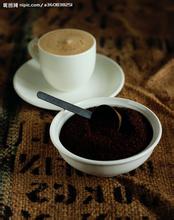Introduction to the characteristics of Mexican Coffee Flavor with nutty aftertaste
Teotihuacán civilization (Teotihuacán) began around 200 BC, about in the central part of modern Mexico, is a civilization born after the death of Olmec civilization, about the same period as the Mayan civilization of ancient Indian civilization, Teotihuacán people in the first year to 150 AD, built a population of about 50,000, can be called the earliest existence of the entire American region of the city hierarchy settlement, the construction of many pyramids. However, unlike other ancient Indian civilizations, which have distinct lineages, the origin of Teotihuacan remains a mystery, and no one has been able to confirm that the civilization had written records. The existence of this civilization is known today not only because they left behind huge traces for analytical proof, but also because some other civilizations of their time mentioned Teotihuacan things in texts or paintings, which is another key reference. The Teotihuacans did not call themselves by that name. In the 1860s, France controlled Mexico during the Mexican Civil War, but it was overthrown before it was completely controlled. In 1867, democracy was restored, and Juárez was elected to re-election and continued his reforms. In 1871, he was elected a second time to his opposition Liberal Party, which considered the electoral process undemocratic. A year after Juarez's death, Miguel Lerdo de Tejada succeeded him.
Diaz dictatorship
In 1876 Tejada was re-elected, defeating Diaz. In 1876, Diaz rebelled against the government and announced plans to overthrow Tejada and establish himself as president. After Diaz overthrew the previous government, Tejada fled the country and Diaz became the new president. Thus began more than three decades of dictatorship (1876 - 1911), a period of relative prosperity and peace, with much improved infrastructure, thanks to foreign investment.
Due to geographical and climatic reasons, Mexican coffee is grown close to Guatemala and is classified as Mesoamerican. The main producing areas are: Cocolabegu, Australia and Luca states, most of the products are highland-produced washed beans, with good aroma and sour taste, classified into three categories according to altitude: Aldumara (219-1280 meters), Prima. Rabeshe (853-1006 m) Puin. Labashe (640-762 m). Coffee beans are mainly exported to the United States. It is characterized by smooth taste, high acidity, medium alcohol, slightly nutty aftertaste. Sweet, sour, bitter taste neutral, moderate sour, taste special, elegant.
Mexicans are enthusiastic and optimistic, and the chocolate in Mexican coffee perfectly reflects this. Mexican coffee has different recipes, but the main difference is whether it contains alcohol or not. We will first introduce the non-alcoholic recipe.
Heat a cup of milk, a teaspoon of cinnamon powder and a teaspoon of vanilla powder in a saucepan. Keep the heat medium, not too high. Make sure the milk doesn't boil. Then add cocoa powder, dissolve well and stir well. If you love chocolate, you can use chocolate paste instead of cocoa powder and milk mix.
Allow the milk to cool for about 5 minutes before pouring into the coffee. Garnish the coffee with cold cream and a cinnamon stick.
Chocolate and cinnamon aromas blend together to give off a desert flavor. Tasting a cup of coffee like this, you feel like you are walking through the greyish green cacti in the Mexican desert. It is a fun experience. Mexicans are enthusiastic and optimistic, and the chocolate in Mexican coffee perfectly reflects this. Mexican coffee has different recipes, but the main difference is whether it contains alcohol or not. We will first introduce the non-alcoholic recipe.
Heat a cup of milk, a teaspoon of cinnamon powder and a teaspoon of vanilla powder in a saucepan over medium heat. Keep the heat low. Make sure the milk doesn't boil. Then add cocoa powder, dissolve well and stir well. If you love chocolate, you can substitute chocolate syrup for cocoa powder and milk.
Allow the milk to cool for about 5 minutes before pouring into the coffee. Garnish the coffee with cold cream and a cinnamon stick.
Chocolate and cinnamon aromas blend together to give off a desert flavor. Tasting a cup of coffee like this, you feel like you're walking through the greyish green cacti of the Mexican desert. It's a fun experience.
Mexico's most famous alcoholic drink is tequila, which Mexicans drink with a lick of salt on their tongue and then swallow in a small glass. Tequila is a strong drink, add this wine to make Mexican coffee is very, if you have enough courage, might as well try

Important Notice :
前街咖啡 FrontStreet Coffee has moved to new addredd:
FrontStreet Coffee Address: 315,Donghua East Road,GuangZhou
Tel:020 38364473
- Prev

Introduction to Costa Rican Yerzaro Coffee with rich acidity and strong flavor
Generally speaking, Costa Rica always prides itself on its exquisite water-washed coffee. It always picks ripe coffee fruits by hand and strictly controls the process of soaking and fermentation. the coffee produced under this process has an excellent balance of clean flavor and taste complexity; it has always been highly regarded in the industry. However, a new method of honey treatment has become a trend in recent years.
- Next

Introduction to the flavor and taste characteristics of the pleasant-scented coffee manor in Dominica
The Dominican Republic is a popular country for travelers. It lives next to Haiti on the island of Hispaniola in the West Indies, Dominica in the west and Haiti in the east. The whitest and softest white sand in the world, the cool sea breeze from the Atlantic and Caribbean and the warm sunshine in the tropics make it a holiday paradise on a par with Maldives and Hawaii.
Related
- Detailed explanation of Jadeite planting Land in Panamanian Jadeite Manor introduction to the grading system of Jadeite competitive bidding, Red bid, Green bid and Rose Summer
- Story of Coffee planting in Brenka region of Costa Rica Stonehenge Manor anaerobic heavy honey treatment of flavor mouth
- What's on the barrel of Blue Mountain Coffee beans?
- Can American coffee also pull flowers? How to use hot American style to pull out a good-looking pattern?
- Can you make a cold extract with coffee beans? What is the right proportion for cold-extracted coffee formula?
- Indonesian PWN Gold Mandrine Coffee Origin Features Flavor How to Chong? Mandolin coffee is American.
- A brief introduction to the flavor characteristics of Brazilian yellow bourbon coffee beans
- What is the effect of different water quality on the flavor of cold-extracted coffee? What kind of water is best for brewing coffee?
- Why do you think of Rose Summer whenever you mention Panamanian coffee?
- Introduction to the characteristics of authentic blue mountain coffee bean producing areas? What is the CIB Coffee Authority in Jamaica?

